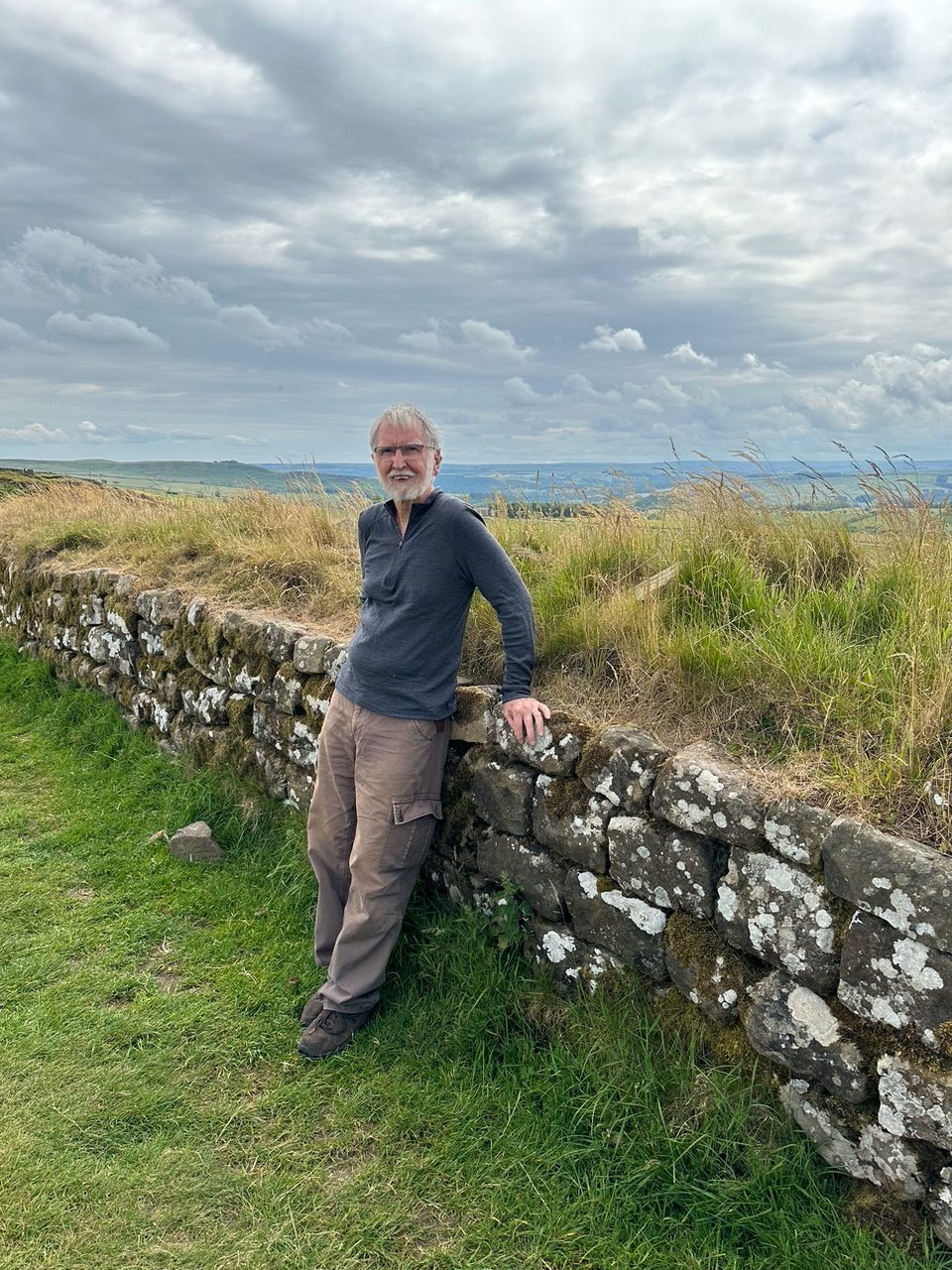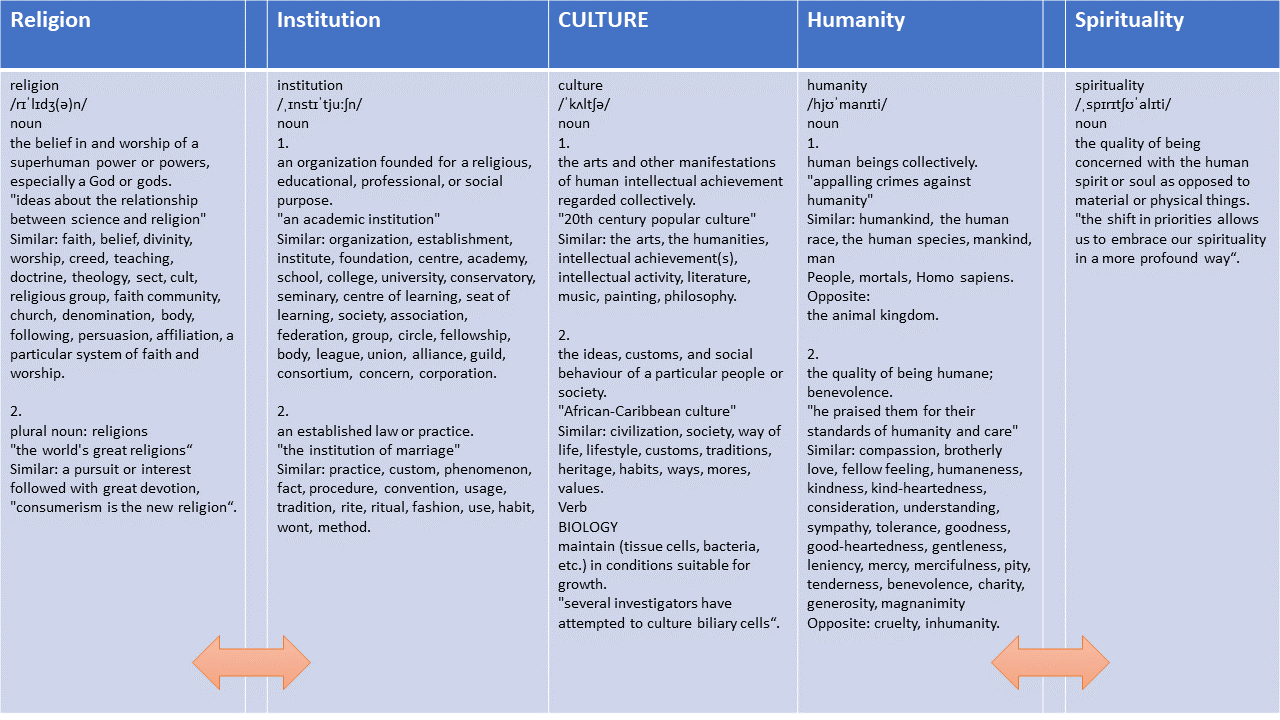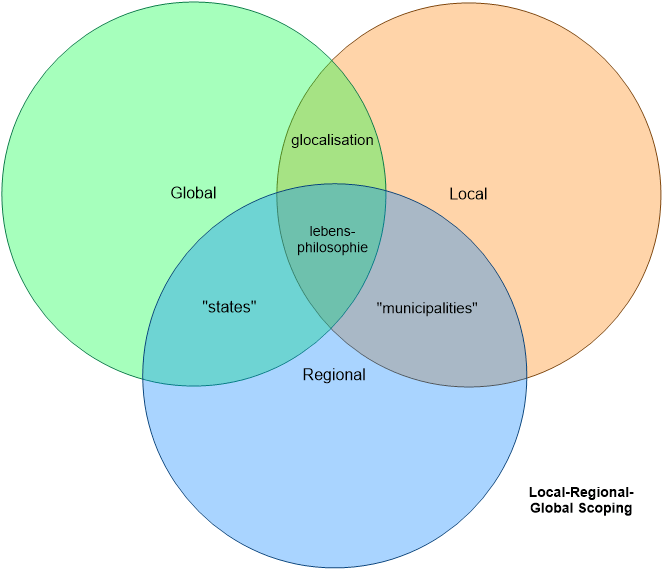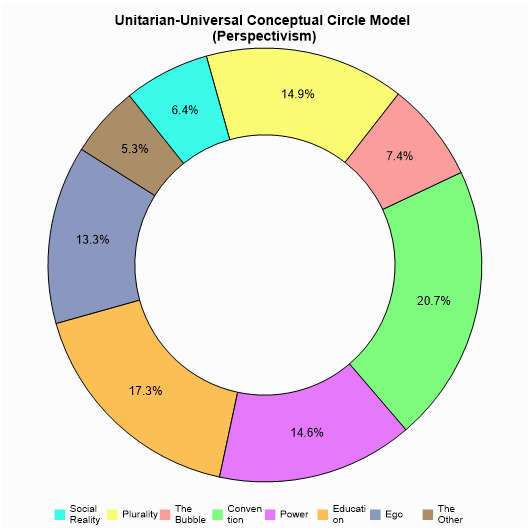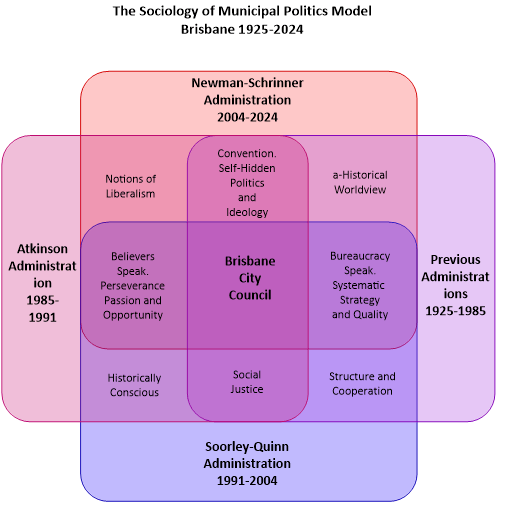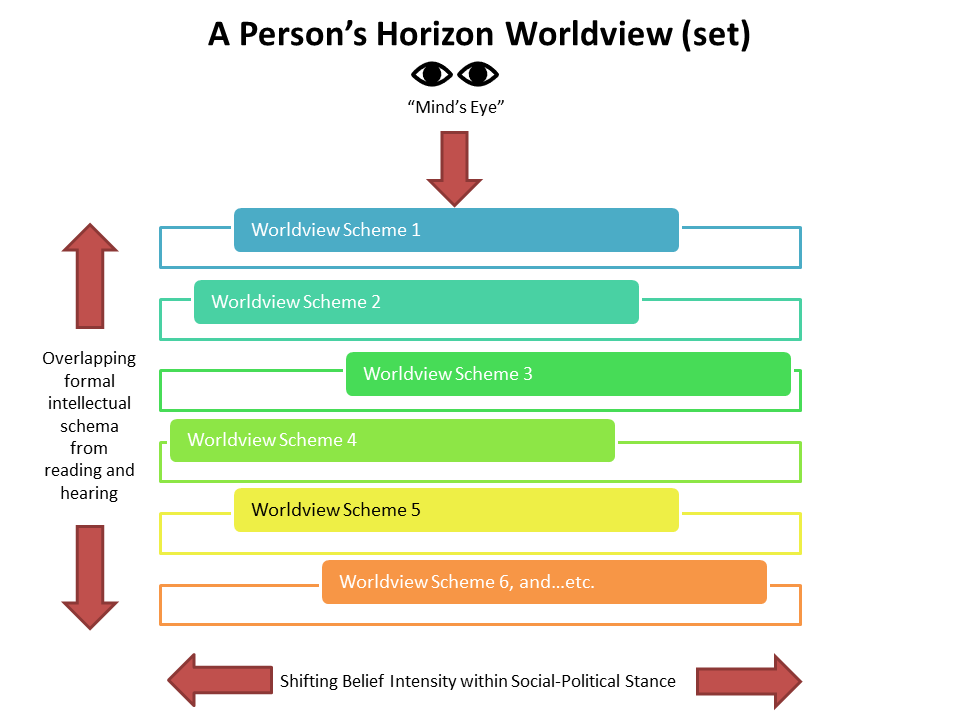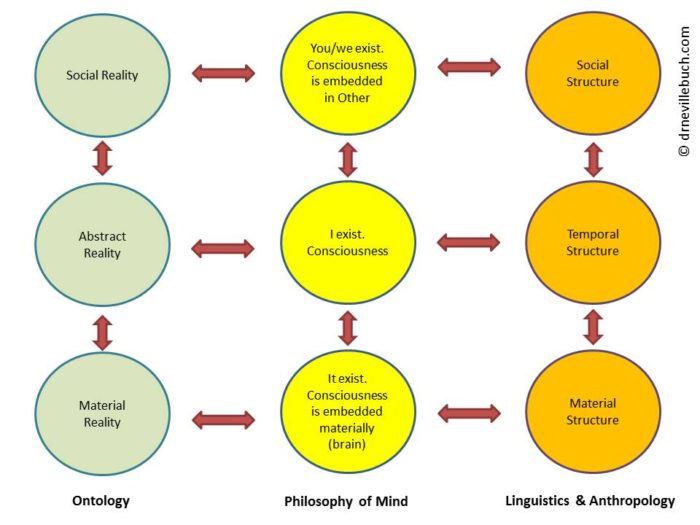By Neville Buch, Ph.D., MPHA
Third Paper, Exploratory, Version for
2023 Sydney TASA Conference
Slide 1. Introduction
In preparing the publication and presentation papers for the Sydney TASA Conference, at the end of November 2023, this is a third paper, an exploratory pre-look at the arguments, explaining the sociological models in more detail than the first two papers.
The narrative for all three TASA papers is held together in the process of the professional middle class rebelling against the “business-as-usual” politics and the “set-and-forget” policies. In the global scoping of the thinking the 2023 International Sociology Association’s world congress (ISA) in Melbourne, picked up these themes in various plenaries and session papers.
Slide 2. 2023 International Sociology Association’s world congress (ISA)
The wider state of affairs demonstrates a deeper philosophic and political problem, in that sandstone universities, while shifted in naming to the multidisciplinary approaches, generally fail to consider local and regional factors in sufficient interdisciplinary scoping. This is because there is a misunderstanding: the difference between multidisciplinary and interdisciplinary. The former lines-up one story after the other from disciplinary perspectives. The latter tells one story of the fit of the stories of disciplinary perspectives: history, geography, sociology, etc. The ISA Congress was an interdisciplinary affair in many of the research papers.
Image: 2023–06-25 ISA Neville just walked into the Congress
Slide 3. Sara Hanafi’s Dialogical Political Liberalism
Sara Hanafi, the ISA President, spoke on his Dialogical Political Liberal Project. Liberal Democracies generally follow Rawls, since his ‘A Theory of Justice’ (1971), and the problem has been the inferred-thinking of the consumer-driven individualism, which Hanafi calls, as developing over the last few decades, the ideology of ‘Symbolic Liberalism’. As a solution Hanafi has argued for the Dialogical Political Liberalism.
This means open consultation in the liberal society on different visions of justice and the common good between different communities. We share an urban environment but the understanding of the ‘urban’ – different semantics – needs to be articulated and the common ground – a universal good – found.
Image: 2023-06-25 Sara Hanafi, ISA President, on his Dialogical Political Liberal Project
Slide 4. David Lowenthal, Randall Collins, Allan Megill
Resisting the types of compatibilist effort are the processes or governance and bureaucracy which normatively – ‘business-as-usual’ – maintain the mechanics of the social system in a non-transparent malaise – ‘set-and-forget’. For the comfortable middle classes everything changes while nothing changes. Adjoining the argument of work are other historians and sociologists: David Lowenthal, Randall Collins, Allan Megill. These are the interdisciplinary sources.
Image: Three American Systems Thinkers
Slide 5. Ivan Illich and Michael Macklin
Juan Piovani, in “The Idea of Conviviality and Its Methodological Implications” (Universidad Nacional de La Plata, Argentina), spoke about the term, Conviviality, as coming from the book Tools of conviviality, by Ivan Illich (1973).
In 1973 Ivan Illich, defined the convivial society entailing “. . . autonomous and creative intercourse among persons, and the intercourse of persons with this environment; . . . individual freedom realized in personal independence” (Illich 1973: 11; Avant 1975: 999-1000). The point is significant for the examination before the reader.
It was former Franciscan, former Democrat Senator for Queensland, and former Dean at the University of New England, Dr. Michael Macklin, who had introduced the pedagogy and andragogy of Ivan Illich to Australia during the mid-1970s.
Image: 2023. Michael Macklin at Hadrian Wall
Slide 6. Plato and Aristotle
In Plato’s records of the Socratic Dialogue ‘the Academy’ was the ‘outside communities’, outside of institutional structures. What is important in the question of Conviviality is understanding what is institutional and what is not. The current historical climate is a matter when the academy and outside communities have again collapsed into each other.
Slide 7. Definitions
This leads to the capacity to map out definitions to understanding the width of contemporary semantics, and this allows us to understand how the academy and outside communities have again collapsed into each other.
The mapping of the definitional table (below) is the fairest approach in the semantic. Most public conversations appear to be guided by the understanding of ‘culture’. It is central. One side of the political spectrum are conversations in, on, against, about, religion and institutions. The side are conversations in, on, against, about, humanity and spirituality. This is the space where semantic misunderstandings occur. It drives the Emotion, Caring, and Conviviality.
A very few scholars truly – that is, the epistemic ‘fit’ – have engaged in local urban sociology with interdisciplinary knowledge. For example, the talk of the sociologists, the Council, and the State show no historical measurement. The political willingness to comprehensively scope is the key to understanding. It is the historiographical methodology of the combined synoptic vision with the geographic concepts of scaling, scoping, and mapping. Synoptic Vision can be obtained. The point of the synoptic consensus is that knowledge is constructed as the human mind. What is achieved is a qualitative measure, bearing in mind that sociological models are artificial; they are not what is normatively assumed as the existence of the natural world. Reality is often said to be ‘natural’ rather than metaphysical, but it is the projection of a cognised pattern. In such case the old ancient-medieval debate of philosophy matters little, and the synoptic knowledge provide the best insights into probable futures.
Table: Definitions for Emotion-Caring-Convivial Urban Sociology
Slide 8. Local-Regional-Global Diagram
The misunderstandings noted also speaks to the context of Globalization, Localism and Transnationalism, producing what the author calls the “Local-Regional-Global Dynamic”. The British sociologist Roland Robertson (1994: 33–52) popularised the term ‘glocalization’, meaning a general cultural sphere by positing the interdependence of local and global processes in the formation of collective identities and symbolic interactions. Whereas the urban was known as city-states in ancient times, states are now known as either regional or global. City-states developed into municipalities during the late medieval ages, giving rise to the European renaissance. Cities are both local and regional. Our life-experience, lebens-philosophie, is a condition of all three: local, regional, global outlooks synthesised as a person’s worldview.
Slide 9. Local-Regional-Global Matrix
The terms, ‘local’, ‘regional’, ‘global’ are merely the descriptions of three types of scopings in the rhetoric or thinking. The relationships are, in different contexts, overlapping, cross-overing, paralleling, and emerging, depending on the activity of the language. The characteristics of the relationships include power, but the language is rich in the description of how we each relate to one another. Institutions and organisations are each better at some characteristics than others. The State needs public interest, as do universities, whereas municipalities continue on without much attention from its residents, until a moment of crisis. There is attitude of expertise shown to the State and municipalities. Each state governance has similarity in goals, what we refer to as policies. Communities, on the other hand, generally, work from harmonious relationships. Community still has structure in that cooperation, which is generally shared with municipalities; until there is a crisis. Municipalities tend to be blindsided in the talk of systematic strategy and quality. Universities have moved in the same direction, but the traditional model for the universities are ideas and practice of perseverance, passion for learning, and opportunities for improving the world. Surprising to some, universities and their local communities share in the values and ethics. Taken altogether, the characteristics provides each person with a worldview in the learning environment.
Image: Local-Regional-Global Matrix
Slide 10. Unitarian-Universalist Diagram
The problem in the academic mindset is its calculating disposition is not relevant to understanding the Universal Mind. It cannot be cut-up into segments of certain percentage. The diagram here (below) is place as the reductio ad absurdum. Outside of mathematics, truths cannot be calculated. Academic narrowness comes from the lack of exposure to Lebensphilosophie. The interdisciplinary discussions between history, philosophy, and sociology are the ‘Synoptic Vision’.
Image: Unitarian-Universal Conceptual Circle
In both religious and secular communities, there is the paradigm of Unitarian-Universalism, which is a movement in thought from Sociology of Knowledge to Sociology of Ideology and Networks (Buch 2017).
Slide 11. Neville Buch’s Philosophy and History
For the sociologist to understand this truth fully, the relationships between categories of Myth, History, and Philosophy have to be explored. Instead of the calculating circle, the process of historical time operates as a model spiral. This is a spiral which begins in the analytic tradition but ends up in the continental. From the grand claims of knowledge to being. The concepts of unity and the universal is a step along the way in thinking matters through, even as we tend to make those concepts the Absolute. However, the reference to unity and the universal is a claim for the method of scoping in and out.
Image: Neville Buch’s Philosophy and History Spiral of Time (the link explains)
Slide 12. Categories in Studies-in-Religion
The discipline of Studies-in-Religion has also aided the change in thinking of the last half-century. European, Anglo, and American philosophers have create a new spiritual learning environment, which some might call religion. There are four broad scoped schools, each with a different model, and includes 14 academic schools of thought. There is a theoretical enculturation model from the Continental tradition and transferred to the United States after World War II. It began in the General Theory with the British schools taken up the continental development. The European experience also included German and French existentialism, which was reworked in Anglo-American pastoral care theories. The political dimension was expressed also in the European theological development of neo-orthodoxy. The Americans reworked the thinking into political realism. This “neo-orthodox” model is now the American mainstream ‘evangelical’ stream. With the emphasis on good news, and living the good life, it has been coopted into the American cultural concept of wealth. Sociologically, the thinking is translated into a priority for a conventional ideal of material reality.
Phenomenology led to debates for ethical internalism and against ethical externalism. There could not be one cultural externality to demand any orthodoxy, and, thus, the cultural pluralism model. The process has come from the academic Left with academic forms of conceptual skepticism; a process shared with earlier existentialist system thinkers. The way to understand the Anglo-American movement of radical ethics and communitarian is, not only its connection to concepts of plurality and democracy, but also with the Moral and Modern Civilisation Model. In contrast to the model, this is the problem for the new type of hypo-conservatism which has existed in politics. The neo-conservativism renounced the moral foundational thinking of civilisation for the sake of “state rights”. In the view of neo-conservatists, the world has not fundamentally or functionally changed, and the historians and sociologists are the ones talking nonsense.
The Modern Civilisation Model is most articulated in contemporary humanism: Humanity has the priority over the State. One specific school is that of ideology and utopia, from Karl Mannheim and Paul Ricoeur in particular. It shares certain characteristics with the old definitional category of religion: visionary or messianic. However, since there is no need for orthodoxy and dogma in the outlook, the movement in studies-in-religion has been moving towards the concept of ‘spirituality’, the Lebensphilosophie of big belief and doubt.
Image: Conceptual Systems for Studies-in-Religion (link explains)
Slide 13. The Sociology Of Municipal Politics Diagram
The “big picture” is more than the sociological modelling and considers the sociology input as a fit in larger interdisciplinary discourses. This is the role of the Southern Brisbane Suburban Forum Inc., which has been operated, for the last few years, as a local group of engineers, government bureaucrats, community development workers, and a sociological-philosophic historian as President (the author). One of the major issues of the Forum has been a battle of the business consultancy, Dr Neville Buch ABN: 86703686642, for the last five years (Buch 2018 b, c). It is a battle where the current political administration of Council has demonstrated both 1) poor historical knowledge of the city, including the history of the Council itself, and 2) poor understanding of the principles and global practices of local heritage. It might be counter-argued (politically) that this is just a generic problem of any council outlook. However, the opposition Councillors in the Brisbane City Council do take a different approach, educated by both the Southern Brisbane Suburban Forum Inc., and the Brisbane Southside History Network.
Community research and education of the Forum and Network is local public service (Buch 2022). The recent climax for the Forum and Network has been challenging the intellectual competence of the Brisbane Lord Mayor on the city’s social and historical questions (Buch 2023a); communication directly to the Mayor. As indicated at the end of the previous paragraph, the expectations of the Mayor and the Council is not utopian. There have been, in the recent history of Council, Lord Mayors highly intelligent on social and historical questions: Sallyanne Atkinson (Atkinson 2016), Jim Soorley (Soorley 1993), and Tim Quinn (Quinn, et al, 2014). After a long period of conventional Council governance, the place of local culture returned with Sallyanne Atkinson (in office 1985-1991) as one of the most intelligent Lord Mayors and the first and only female Lord Mayor of Brisbane. A history graduate, Sallyanne was a good friend to several members of the Department of History at the University of Queensland during her tenure. As an intellectual, the former priest, Lord Mayor Jim Soorley (1991-2003), made “a shift from Brisbane Council being only concerned with ‘rates, roads, rubbish’ to taking on issues such as drug use, homelessness, domestic violence and social justice.” Tim Quinn (2003-2004) followed Soorley’s direction with Urban Renewal being an important intellectual theme, and that connected with the sociology of urban gentrification for the inner-city.
Quinn is today a local history leader on the Brisbane southside. In this work the academy has been significantly absent. At the 2021 Australian Political Studies Association Conference, the author argued the promises of the 1990s local studies field collapsed before the historiographical challenges in the history wars of the Prime Ministership of John Howard, and escalated into the cultural war of the Trump era (Buch 2021b). The argument was recently developed at the Australian Historical Association Conference (Buch 2023a; Australian Catholic University).
The late John Laverty contributed to the intellectual critique of the Brisbane City Council through a very detailed examination of the pre-1925 Brisbane Municipal Council (1859-1902). It seems some of that legacy has continued and some obstructed. The reading of the histories is very mixed. Examining the Council minutes, from 1925 to 1937, there are no references to concepts of the urban, community, nor educational interests, except for rate and tariff exemptions or reductions for educational institutions and applications to show educational films in council-owned halls. Hence, the Council was able to have control over educational processes without making contributions to municipal education. The Local Authorities Association of Queensland was active in the interchange with the Council from 1925. Delegates were appointed from the conference to attend the Association. Competing with those agendas of the association was the Local Government Clerks’ Association (later, Municipal Officers’ Association) and the Local Producers’ Association. The policy of preference for locally manufactured articles for municipal use was there from 1925, but the challenge has been the opportunity for corrupt practices of favourism. In the last quarter of the century the Council did become globally conscious, but again the intellectual outlook was very mixed. The objections from Council when faced with large cultural proposals has centred around an odd argument that education has nothing to do with the affairs of Council.
In contrast to the Brisbane universities and the Council, there are the community organisations. The local history organisations in Brisbane are often led by the Brisbane History Group Inc., and the Royal Historical Society of the Queensland, but the intellectual landscape is also made up of the Brisbane Southside History Network with 16 groups south of the river, and 17 groups on the unnetworked northside. There is a great gap between the Council’s, with the general public’s, understanding of local history, and against the municipal knowledge of local history organisations. Few local sites, though, were thinking through the sociological schemas in terms of the misinformation in the outlook of localism. Local Aboriginal history and sociology has done better, of which Burke, et. al. (2020) is particularly notable.
Image: Brisbane City Council Sociology 1925-2024
The local scholarship draws on the global literature, according to different communities, and thus different types of local communities are considering different insights, which unfortunately often does not get to the interdisciplinary scoping. For the local philosophy communities (e.g., The Philosophy Cafe Brisbane Meet Up run by the author), there is a greater understanding of concepts and practices in politics and local conflicts. (e.g., in Rancière 1999). For the local education communities, it is a question of Civic Education (de Jong 2020). Communities of local history and geography are informed on the relationships between social theories and spatiality (e.g., in Gregory 1991). Since the end of the 1980s, locally and globally, those insights became hidden histories in the geography discipline (Howitt 2007). That ignorance was generated deliberately and politically as universities faced decisions to no longer teach increasing small-enrolled sub-fields of contested knowledge, due to funding policies. This has meant an increasing population of university graduates without a wider education in the most update understanding of their society. Such understandings are a threat to governing parties when it has the potential for more forceful opposition. It is for this reason that local ecological communities are struggling. Swyngedouw (2009) speaks of the “antinomies of the postpolitical city”. The challenge for the City is whether the understanding can be resolved as a reasonable and practical solution or whether the ‘postpolitical’ rhetoric will simply cancel out a healthy political and local culture(s). The local, educated, political communities well understand all of these dynamics of knowledge construction. The global literature of the last 30 years which has been locally informative is very large, which is then bewildering on the existence of local, uneducated, political communities; something wilfully unintelligent. Local and global readers – if willing – can see the City as contested space or landscape (Duncan 1990). The relationship between political culture and public sphere has become more apparent (Somers 1995). Populist postmodernist rhetoric has been turned against actual democratic processes (Rogers 2004). By the end of the last decade, arguments on, about, and against populism and localism was well-established (e.g., in Griggs and Howarth 2008). Of the last decade and some, the major themes have been contention, polarisation, and culture war (Mitchell, Attoh and Staeheli 2015; Muste 2014).
Slide 14. Theory
Sociologists, as a general truism, believe that any governance too long in power become corrupt, lose integrity, and generally end up with no effective vision for the future. Change eventually comes but the nature of the change is unknown.
The Conviviality Theme speaks of ‘Social Power’ which has shifted from the academy to outside communities.
These basic ideas draw together the pragmaticism of Mead, John Dewey, and other sociologists, such as C. Wright Mills and his 1956 book: The Power Elite, as well as the hermeneutic philosophy of Charles Taylor and Paul Ricoeur. What brings this interdisciplinary ‘fit’ together is the importance of Language and Power as both structure and persons. This is an understanding for the locality, as much as for the world.
Image: Sociological Power and Theory Mapping (the link explains)
There is in indigenous perspectives a good understanding of misleading fear and conflict narratives. Among the non-indigenous population, local scholars (Caulfield and Wanna 1995; Davis 1995), in the mid-1990s, were developing applied theories in the perspectives of power and community which laid down the groundwork of the urban sociology for this paper. More recently, local scholars have been turning to the concept of social representations in Brisbane newspapers (Raynor, Matthews, and Mayere 2017). In all of these works are debates on urban consolidation. This is where the politics enters; with the need to have a singular messaging in the public relations (“PR”) rhetoric. However, Lebensphilosophie – actual lived experience in the City – is nothing like the messaging. The recent movement towards the March 2024 Brisbane City Council elections is bearing out the oppositional argument with Green’s candidate for Mayor, Jonathan Sriranganathan, in the running (Sullivan 2022). Nicole Johnston, independent Councillor for Tennyson, is also a representative of the better urban sociology outlook. That outlook is the Synoptic Vision.
Slide 15. A Persons’ Worldviews
There are three points to be made on municipal governance in Brisbane. The first point is to understand the semantics of ‘common sense’ judgements: it is not necessarily ‘common’ nor ‘sense’ to the populace. Scholarship, not populist or academic politics, is what matters. The second point is the interdisciplinary approach that Kleidman (2006: 68-82) seeks to design for sociology research: creating synergies between professional and engaged social science. The third point comes out of my interdisciplinary research on the works of European and American modernism: in particular, applied philosophers Charles Taylor and Paul Ricoeur, and sociologist George Herbert Mead. The thinkers are indebted to Hegel and basic idealism which, contra the positivistic critical claims, have always girted the disciplines of history, social geography, and sociology.
Image: Mind’s Eye of a Personal Horizon Worldview (link explains)
Slide 16. Deepen Understanding
The intellectual outlook of the city’s residents shapes policies in the urban sociology, and, as such, is a way forward: to 1) understand the semantics of ‘common sense’ judgements; 2) adopt the interdisciplinary approach; and 3) take seriously the sociologically-interpreted European-Anglo-American histories in describing our current modernism(s). This is our compatibilist progressivism for suburban sustainable living.
Image: The Interdisciplinary Model: Interrelation-of-Ideas-on-Consciousness-and-Reality (link explains)
BIBLIOGRAPHY
2022 Glasgow Declaration of Modern Humanism
Atkinson, Sallyanne (2016). No job for a woman, St Lucia, Queensland : University of Queensland Press.
Avant, Gayle (1975). Review of Tools for Conviviality by Ivan Illich, The American Political Science Review, 69(3), 999-1000.
Banks, J. A. (1989). From Universal History to Historical Sociology, The British Journal of Sociology, 40(4), 521–543. https://doi.org/10.2307/590887
Buch, Neville (1995). American Influence on Protestantism in Queensland since 1945, Ph.D. thesis, Department of History, University of Queensland, August 1994, Awarded April 1995.
Buch, Neville (2017). Historical Sociology Thesis, academia.edu .
Buch, Neville (2018a). Small is Big: Scaling the Map for Brisbane Persons and Institutions 1825-2000. ‘The Scale of History’ AHA Conference, Australian National University, 4 July 2018.
Buch, Neville (2018b). Looking to the Future for the Past Business Case, , Dr Neville Buch ABN: 86703686642.
Buch, Neville (2018c). NDB-TWIM-BP Concept Plan for Brisbane City Council, Dr Neville Buch ABN: 86703686642.
Buch, Neville (2019). Mapping Local Educated Society 1859-2009: Landscape and Culture in the Mapping Brisbane Education Project, Port Macquarie Campus, Charles Stuart University, 21 November 2019.
Buch, Neville (2021a). Melbourne, Brisbane Southside, and Urban Development, Dr Neville Buch ABN: 86703686642 (https://drnevillebuch.com/melbourne-brisbane-southside-and-urban-development/).
Buch, Neville (2021b). Politics in the Age of Uncertainty: Anti-intellectualism, Expertise, and the Technological Agenda in Queensland Politics, 1911-2011, a paper of local-regional relevance, Australian Political Studies Association Annual Conference, 21 September 2021.
Buch, Neville (2022). History and Practice of Community Education No. 1., Dr Neville Buch ABN: 86703686642.
Buch, Neville (2023a). Whither Local History Paper, Australian Historical Association, Melbourne, Australian Catholic University.
Buch, Neville (2023b). SBSF Submission as Feedback on Kurilpa Sustainable Growth Precinct, Southern Brisbane Suburban Forum Inc., and Dr Neville Buch ABN: 86703686642.
Burke, H., Kerkhove, R., Wallis, L. A., Keys, C., & Barker, B. (2020). Nervous nation: Fear, conflict and narratives of fortified domestic architecture on the Queensland frontier, Aboriginal History, 44, 21–58. https://www.jstor.org/stable/27018598
Caulfield, Janice and John Wanna, (1995). Power and community: theoretical approaches, Power and Politics in the City: Brisbane in Transition, 1-17,280-302.
Cook, M. (2017). Vacating the Floodplain: Urban Property, Engineering, and Floods in Brisbane (1974-2011). Conservation and Society, 15(3), 344–354. http://www.jstor.org/stable/26393302
Cook, Margaret (2019). A River with a City Problem: A History of Brisbane Floods, University of Queensland Press.
Davis, Glyn (1995). Power and politics in the city: conclusion, Power and Politics in the City: Brisbane in Transition, 267-279,280-302.
de Jong, W. (2020). Civic Education and Contested Democracy: Towards a Pedagogic State in the Netherlands Post 1945, Palgrave.
Duncan, J. (1990). The City as Text: The Politics of Landscape Interpretation in the Kandyan Kingdom, Cambridge University Press.
Gibilisco, Peter (2023). Our mutual obligations in a mutually dependent society, John Menadue’s Public Policy Journal, 18 October 2023.
Finlayson, Laura (2023). The sycophant, Pearls and Irritations: John Menadue’s Public Policy Journal, Republished from the Newleftreview.org, 21 September 2023. (https://johnmenadue.com/the-sycophant/)
Fisher, Rod and Barry Shaw (edited, 2010). Brisbane: Houses, Gardens, Suburbs and Congregations, Papers of Brisbane History Group (22), 197-214, 296-298, 304-311.
Frauley, Jon (2017). Synoptic Vision, The Canadian Journal of Sociology / Cahiers canadiens de sociologie , 42(3), 293-324.
Fuhrman, Susan H. and Richard F. Elmore (1990). Understanding Local Control
Furedi, Frank (2023) Power Play: who really rules today, Roots & Wings email newsletter, 28 October 2023.
Galuszka, J. (2019). What makes urban governance co-productive? Contradictions in the current debate on co-production. Planning Theory, 18(1), 143–160. https://www.jstor.org/stable/26677440
Gregory, Derek (1991). Interventions in the Historical Geography of Modernity: Social Theory, and the Politics of Representation, Geografiska Annaler (Swedish Society for Anthropology and Geography), Series B, Human Geography, 73(1), 17–44. www.jstor.org/stable/490924.
Griggs, S. and Howarth, D. (2008). Populism, Localism and Environmental Politics: The Logic and Rhetoric of the Stop Stansted Expansion Campaign, Planning Theory, 7(2), 123–144. http://www.jstor.org/stable/26004248
Gunn, S. (2004). Class, identity and the urban: the middle class in England, c.1790-1950, Urban History, 31(1), 29–47. http://www.jstor.org/stable/44613439
Howitt, Richard (2007). Hidden histories in geography : a politics of inclusion and participation, Gender, Place and Culture – A Journal of Feminist Geography, 14(1), 51-56.
Kanaris, Jim (2023). Toward a Philosophy of Religious Studies: Enecstatic Explorations, SUNY Press.
Kleidman, Robert (2006). “Public Sociology, Engaged Scholarship, and Community Organizing,” Journal of Applied Sociology, 23(1), 68–82. www.jstor.org/stable/43736125.
Lawson, Ronald (1980) Towards Demythologizing the “Australian Legend”: Turner’s Frontier Thesis and the Australian Experience, Journal of Social History, 13 (4), 577-587.
Lea, Gary R. (2020). Constructivism and its risks in artificial intelligence, Prometheus, 36(4), 322-346.
Lee, G., Marriot, M., & Jones, C. F. (2009). Brisbane Foreshore Parklands. Landscape Architecture Australia, 123, 58–63. http://www.jstor.org/stable/45141435
Lesh, James (2023). Values in Cities: Urban Heritage in Twentieth-Century Australia, Routledge.
Megill, Allan (2009). The Needed Centrality of Regional History, academia.edu .
Mišina, Dalibor (2015). Who Now Needs Sociology? Transdisciplinarity Vs. Tradition, The Canadian Journal of Sociology / Cahiers Canadiens De Sociologie, 40(4), 527–546. www.jstor.org/stable/canajsocicahican.40.4.527.
Mitchell, D., Attoh K. and Staeheli L. (2015). Whose city? What politics? Contentious and noncontentious spaces on Colorado’s Front Range, Urban Studies, 52: 2633–2648.
Mullins, P and University of Queensland. Department of Anthropology and Sociology Brisbane Northern Freeway impact study : social consequences. Special report no. 2, Social implications of the Brisbane Northern Freeway. the Dept, St Lucia, 1976.
Mullins, P and University of Queensland. Department of Anthropology and Sociology Brisbane Northern Freeway impact study : social consequences. Special report no. 4, Network structure and political mobilisation : the case of a Brisbane urban social movement. the Dept, St Lucia, 1976.
Mullins, Patrick & University of Queensland. Dept. of Sociology and Anthropology (1976). Residents and the Brisbane northern freeway: the pre-location situation. Dept. of Anthropology and Sociology, University of Queensland.
Mullins, Patrick (1979). The Struggle against Brisbane’s Freeways, 1966-1974: An Australian Case Study of Urban Development, Residential Life and Urban Politics, Department of Anthropology and Sociology, University of Queensland, Ph.D. Thesis
Mullins, Patrick (1979). Women and the struggle against Brisbane’s freeways, Australian and New Zealand Journal of Sociology. 15 (Mar 1979), 43-49.
Mullins, Patrick & West, Mark (1998). Windsor twenty-five years on: the continuing presence of a 1970s freeway plan in inner Brisbane, Urban Policy and Research. 16 (3), 199-210.
Muste, C. P. (2014). Reframing Polarization: Social Groups and “Culture Wars”, PS: Political Science and Politics, 47(2), 432–442. http://www.jstor.org/stable/43284567
Nicholls, D. (1985). The English Middle Class and the Ideological Significance of Radicalism, 1760-1886, Journal of British Studies, 24(4), 415–433. http://www.jstor.org/stable/175474
Ormerod, E., & MacLeod, G. (2019). Beyond consensus and conflict in housing governance: Returning to the local state. Planning Theory, 18(3), 319–338. https://www.jstor.org/stable/26759191
Perry, B. (2011). Universities and Cities: Governance, Institutions and Mediation. Built Environment, 37(3), 244–259. http://www.jstor.org/stable/23290044
Piovani, Juan (2023). The Idea of Conviviality and Its Methodological Implications, 2023 International Sociology Association (ISA) World Congress abstracts, Melbourne, Australia.
Quinn, Tim, et. al. (2014). Walking with the water rats : … Kurilpa Point to Davies Park and beyond, Department of Environment & West End Making History Group.
Rancière, J. (1999). Dis-Agreement: Politics and Philosophy. Minneapolis, MN: University of Minnesota Press.
Raynor, K., Matthews, T., & Mayere, S. (2017). Shaping urban consolidation debates: social representations in Brisbane newspaper media, Urban Studies, 54(6), 1519–1536. https://www.jstor.org/stable/26151428
Ritzer, George (1993). The McDonaldization of Society: an investigation into the changing character of contemporary social life, Pine Forge Press.
Robb, Arlene (2005). House on the Hill, House in the Valley: the influence of topography on Brisbane suburban fabric, The University of Queensland, School of Geography, Planning and Environment Management.
Robertson, Roland (1994). Globalization: Social Theory and Global Culture, Sage.
Robinson, G. M. (1994). Instant urban development: Brisbane’s South Bank Parklands. Geography, 79(3), 269–271. http://www.jstor.org/stable/40572581
Rogers, Melvin L. (2004). Rortys Straussianism Or Irony Against Democracy, Contemporary Pragmatism, 1(2), 95-121.
Schmidt, T. (1998). An Environment Behaviour Approach to Public Space Design: The Study of Two Urban Spaces in Brisbane. Landscape Australia, 20(3 (79), 240–245. http://www.jstor.org/stable/45144522
Searle, G., & Bunker, R. (2010). Metropolitan strategic planning: An Australian paradigm? Planning Theory, 9(3), 163–180. http://www.jstor.org/stable/26004259
Sellars, Wilfrid (1963, 2017). Science, Perception and Reality, Ridgeview Publishing Company.
Sharma, P. C (1986). Brisbane: some aspects of its social geography, Queensland Geographical Journal Surveys, 272-295.
Somers, Margaret R. (1995). What’s Political or Cultural about Political Culture and the Public Sphere? Toward an Historical Sociology of Concept Formation, Sociological Theory, 13(2), 113–144. www.jstor.org/stable/202157.
Soorley, Jim (1993)., Griffith University. Institute for Cultural Policy Studies and City Cultures Conference (1992 : Brisbane). The body, mind and spirit of the city : towards cultural planning. Institute for Cultural Policy Studies, Faculty of Humanities, Griffith University, Nathan, Qld.
Steger, Manfred B. and Paul James (2015). Globalization Matters: Engaging the Global in Unsettled Times, Cambridge University Press.
Sullivan, Zach (2022). Student film documentary – -Jonno- – YouTube. (https://www.youtube.com/watch?v=tj-YCAVz9Yc)
Sushinsky, J. R., Rhodes, J. R., Shanahan, D. F., Possingham, H. P., & Fuller, R. A. (2017). Maintaining experiences of nature as a city grows. Ecology and Society, 22(3). http://www.jstor.org/stable/26270160
Swyngedouw, E. (2009). The antinomies of the postpolitical city: In search of a democratic politics of environmental production, International Journal of Urban and Regional Studies, 33: 601–620.
Taborda, C., & Bennetts, P. (2020). A paradoxical nature: Roma Street Parkland. Landscape Architecture Australia, 165, 40–41. https://www.jstor.org/stable/48564024
Takeifanga, Toa K. (1996). The middle classes and the gentrification of Inner Brisbane. The University of Queensland, School of Social Science, Master’s Thesis.
Temby, Anna (2024). Governance and Public Space in the Australian City: Negotiating Public Order in Brisbane, 1875–1914, Routledge.
Vanderby, Nikita, et al (2023). Making Public Histories. Australian History Beyond the University, Council of Australian University Librarians Open Educational Resources Collective.
Walters, P., & McCrea, R. (2014). Early Gentrification and the Public Realm: A Case Study of West End in Brisbane, Australia, Urban Studies, 51(2), 355–370. http://www.jstor.org/stable/26145720
Woodward, Ian (2003). Divergent narratives in the imagining of the home amongst middle-class consumers: aesthetics, comfort and the symbolic boundaries of self and home, Journal of Sociology, 39 (4), 391(22).
Featured Image: A road sign with the word hope ahead with rainbow and clouds in the background. 22268416 © Valentin M Armianu, Dreamstime.com
Neville Buch
Latest posts by Neville Buch (see all)
- J. D. Vance’s Insult to America is to Propagandize American Modernism - July 26, 2024
- Why both the two majority Australian political parties get it wrong, and why Australia is following the United States into ‘Higher Education’ idiocy - July 23, 2024
- Populist Nationalism Will Not Deliver; We have been Here Before, many times… - July 20, 2024




